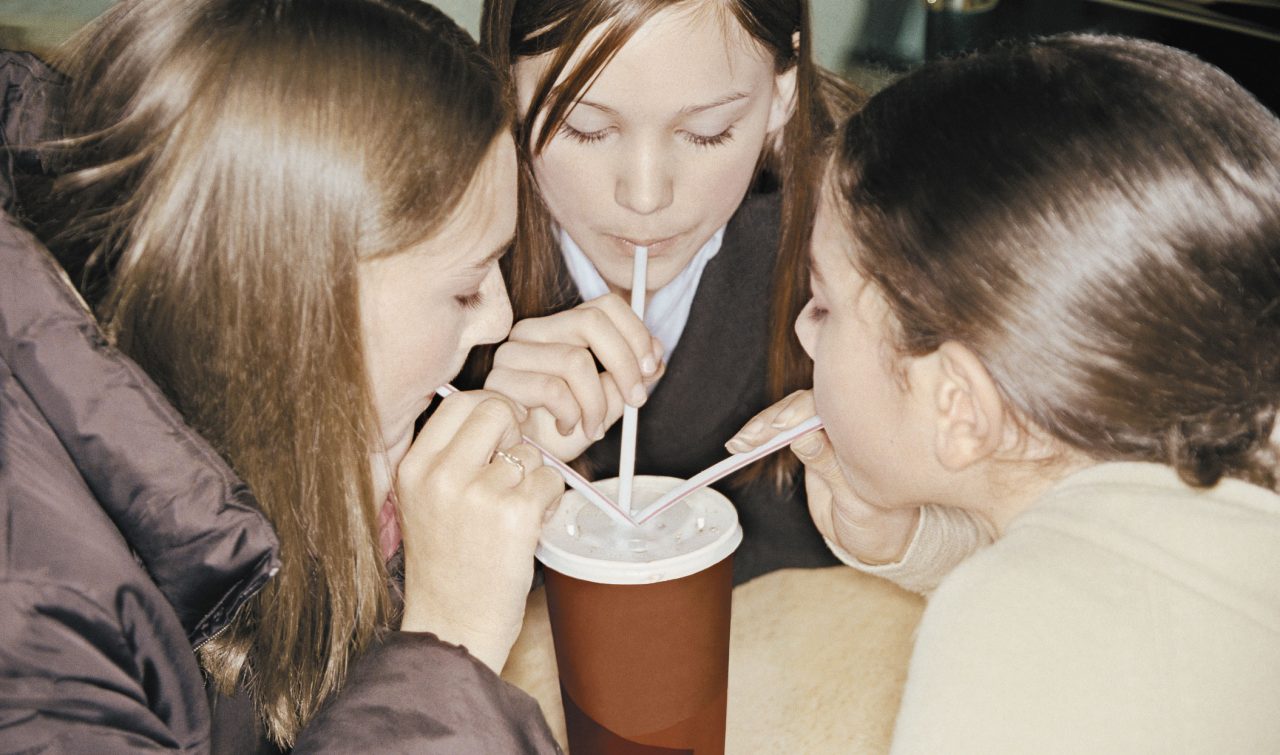How Warning Labels on Soda Could Work

Americans need to stop drinking boatloads of soda. It goes hand in hand with obesity and many related health conditions. Would labels with photos do the trick?
The first U.S. warning labels came in the mid-1960s, in small print on the side of packets of cigarettes. But evidence suggests that photos have a bigger impact.
In a battle against soaring obesity, government regulators are debating warning labels for sugar.
YOU MIGHT ALSO LIKE: Does Drinking Soda Cause Osteoporosis?
Foods already must list “added sugars” on nutrition facts labels. In New York City, prepackaged foods and drinks sold in chain restaurants that contain more than 50 grams (a day’s worth) of added sugars must show a text warning, in addition to a graphic warning exclamation point next to a calorie count.
But sugar-labeling advocates have had an uphill battle. In 2015, the city of San Francisco tried requiring warning labels on ads for sugary sodas, fighting court challenges from the American Beverage Association and others.
The bet is that soda labels could reduce sales and consumption if they include photographs. Another proposal is a soda tax, a strategy popular around the world.
Could labels change buying habits?
With sugar, the labeling could show scary images of the ravages of sugar-linked illnesses like type 2 diabetes and heart disease. Another approach is to show buyers just how much sugar the product contains, in cubes, teaspoons, or packets.
Weighing the effects of scary photos, a small study showed that sales of sugary soda to parents with children ages two to 12 dropped 17 percent if buyers saw photos of a damaged heart or a foot with diabetes-damaged skin.
Another study involving an online model of a convenience store and parents of six- to 11-year-olds showed sales dropped 15 percent after people saw scary health photos. But sales also dropped 13 percent if consumers saw photos of cubes or teaspoons showing how much sugar the soda contained. In an accompanying survey, consumers were more supportive of the sugar images than the health images.
Parents are the most sensitive to such images, research suggests.
A less dramatic impact emerged from a study at a Boston Hospital cafeteria. Researchers from Harvard Business School posted three kinds of warning labels near bottled drink coolers and soda fountain machines at the hospital at different times over 14 weeks, while also tracking purchases.
A simple text warning that said “Drinking beverages with added sugars contributes to obesity, diabetes, and tooth decay” had no effect. But a graphic with text and photos of a fatty stomach, a mouthful of decaying teeth, and an insulin needle inserted into a stomach did slow soda sales.
When buyers saw the graphic and photos, sales dropped 3.2 percent. Sales of water rose by the same percent. That may seem tiny, but it amounted to about 200 people changing their habits over two weeks.
The obesity problem
Changing habits is an urgent need. Americans consume more soda per person than the people of any other nation, with the exception of Argentina. About one in five people say they have a sweetened soda every day.
Meanwhile, Americans just keep getting heavier. More than half of American adults are coping with obesity, and 9 percent of them have a severe problem.
Among the young, the percentage of obesity has more than tripled since the 1970s. Some 13 percent of two- to five-year-olds are heavy enough to affect their current and future health. That number jumps to more than 20 percent of older children and teens.
Most children and teens with obesity are saddled with the problem throughout their lives.
People who are black or Hispanic are more likely to carry extra pounds, which are linked to cheaper, processed food.
The extra weight can trigger or aggravate conditions such as:
- High cholesterol
- High blood pressure
- Type 2 diabetes
- Asthma
- Sleep apnea
- Joint problems
Injectable drugs that dramatically lower appetite, promoting weight loss in people with type 2 diabetes are now available. But would helping people, especially children, steer clear of bad habits, and reduce the need for the medication?
Is soda really the problem?
Sweetened soda is clearly related to weight gain in children, according to the United States Department of Agriculture, although the case for adults isn’t as strong.
While other high-sugar foods like cake and candy are still considered treats, many children consume sugar-heavy beverages every day.
Do we need a tax?
More than 100 countries — covering half of the world’s population — have a sales tax on sugar-sweetened beverages. The taxes have cut consumption and prompted companies to use less sugar in their products.
Mexico was once the nation with the world’s highest soda consumption. Then it took action. After the “12 Spoonfuls” campaign, focused on showing parents the sugar load in soda, Mexico passed a soda tax that reduced sales by 37 percent. In 2020, the country began requiring large-font warning labels on high-sugar products.
What can you do?
It sounds difficult at first, but the easiest way to cut way back on sugar consumption is to make sugar a rare treat, or not to eat it at all. Once you’ve given up sugar, standard sweetened sodas will taste too sweet.
Updated:
September 19, 2023
Reviewed By:
Janet O’Dell, RN